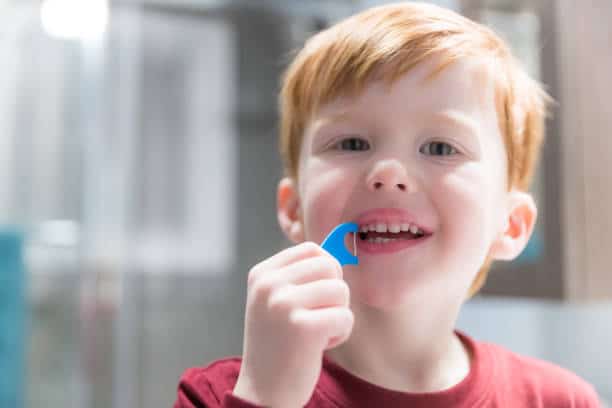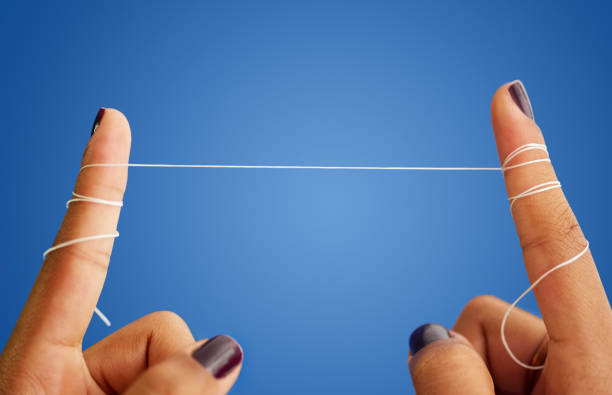
14 Aug DIY Dental Floss: Is It Effective and Safe?
Making Your Own Dental Floss

Making your own DIY dental floss can be a cost-effective and eco-friendly alternative to store-bought options. While traditional dental floss is widely available, some people prefer to create their own to reduce plastic waste or to use natural materials. Below is a guide on how to make DIY floss using easily accessible materials.
Materials Needed
- Silk Thread: Natural silk thread is a great choice for DIY floss. It’s strong, biodegradable, and gentle on gums. You can find silk thread in craft stores or online.
- Beeswax: Beeswax coats the thread, making it easier to slide between teeth. It also provides a natural, pleasant taste.
- Essential Oil (optional): Essential oils like peppermint or tea tree oil can be added to the beeswax for a refreshing taste and added antibacterial properties.
- Small Container: You’ll need a small container or tin to store the floss.
Instructions
- Cut the Silk Thread: Start by cutting a length of silk thread. The length can vary based on your personal preference, but a good starting point is about 18 inches. This will give you enough length to floss all your teeth comfortably.
- Prepare the Beeswax: Place a small amount of beeswax in a microwave-safe dish or double boiler. If you want to add flavor, mix in a few drops of essential oil now. Heat the beeswax gently until it melts completely.
- Coat the Thread: Dip the silk thread into the wax once the beeswax is melted. Make sure the thread is fully coated. You may want to use a small brush to help evenly distribute the wax along the thread. Be careful not to apply too much wax, as this can make the floss sticky and difficult to use.
- Cool and Store: After coating the thread, hang it or lay it on a clean surface to cool. Once the wax has hardened, the floss is ready to use. Store your DIY floss in a small container or tin to keep it clean and portable.
Tips for Use
- Gentle Use: Silk thread is strong but can break if used forcefully. Use gentle, back-and-forth motions when flossing.
- Refining the Floss: If the wax coating is too thick or uneven, gently scrape off the excess wax with a knife or simply remelt and re-coat the floss.
- Storage: Keep the floss in a cool, dry place. If it becomes too warm, the beeswax may melt or become sticky.
Benefits of DIY Floss
- Eco-Friendly: Traditional dental floss often comes in plastic packaging and may contain synthetic materials. By using natural silk thread and beeswax, you’re reducing plastic waste and opting for biodegradable materials.
- Cost-Effective: Although the initial cost of silk thread and beeswax might be higher than a pack of store-bought floss, these materials can last long, making your DIY floss a cost-effective choice in the long run.
- Customization: By making your floss, you can customize it to your liking. Whether you prefer a particular scent, a thicker thread, or a specific length, DIY floss offers flexibility that store-bought floss does not.
Is It Truly Effective?

Effectiveness of DIY Floss
The primary purpose of dental floss is to remove plaque, food particles, and bacteria from between the teeth and along the gum line, areas that toothbrushes often miss. The effectiveness of DIY floss depends largely on the materials used and how well they mimic the properties of commercial floss.
Material Quality
- Silk Thread: Natural silk is a common choice for DIY floss because of its strength, smooth texture, and biodegradability. Silk is effective at sliding between teeth and removing debris. However, it may not be as strong as nylon or PTFE (polytetrafluoroethylene) used in commercial flosses, making it more prone to breaking, especially in tight spaces.
- Beeswax Coating: The application of beeswax to the silk thread helps it glide smoothly between teeth and prevents it from fraying. Beeswax also adds a mild antibacterial property and a pleasant taste. However, the amount and consistency of the wax coating can vary, affecting how well the floss performs. Too much wax can make the floss sticky or leave residue, while too little may result in a rougher texture.
- Essential Oils (Optional): Some DIY enthusiasts add essential oils like peppermint or tea tree oil to the wax coating for flavor and potential antimicrobial benefits. While this can enhance the floss’s effectiveness, it’s important to ensure that the essential oils are used in safe concentrations, as some oils can be irritating to the gums.
Performance Comparison
Compared to commercial floss, DIY floss made from silk and beeswax can be effective, but it may not match the durability and consistency of manufactured products. Commercial floss is designed to withstand high tension, resist shredding, and maintain a uniform texture. DIY floss, while capable, may require more care and attention during use to prevent breakage or fraying. Users might find themselves needing to replace the floss more frequently during a single session.
Safety Considerations
The safety of DIY floss is another crucial aspect. While using natural materials like silk and beeswax has its appeal, there are several safety concerns to be aware of.
Hygiene
Maintaining the cleanliness of DIY floss is vital. Silk thread, being natural, can absorb moisture and harbor bacteria if not stored properly. It’s important to store the floss in a clean, dry container and to ensure that it is not exposed to contaminants. Beeswax, being a natural product, can also degrade over time, particularly if exposed to heat or humidity, potentially leading to the growth of mold or bacteria.
Gum Health
DIY floss must be used with care to avoid damaging the gums. The thread should be strong enough to clean effectively without breaking but gentle enough to prevent cutting or irritating the delicate gum tissue. If the floss frays or breaks easily, it could leave fibers between the teeth, potentially leading to gum irritation or infection.
Allergic Reactions
While rare, some individuals may be allergic to natural materials like silk or beeswax. Additionally, if used, essential oils can cause allergic reactions or gum irritation if not diluted properly. It’s important to test a small amount of the floss or coating material before regular use to ensure there’s no adverse reaction.
Storage and Shelf Life
The shelf life of DIY floss may be shorter than commercial products. Silk and beeswax are susceptible to environmental factors such as moisture, heat, and light. Over time, the materials may break down, lose their effectiveness, or even become contaminated. Regularly inspecting the floss for signs of wear or degradation is essential.
The Balance Between Sustainability and Performance
DIY floss made from biodegradable materials is an attractive option for those interested in reducing their environmental impact. Silk thread and beeswax are natural, renewable resources that break down more easily in the environment than synthetic materials in commercial floss. However, the balance between sustainability and performance is a delicate one.
While DIY floss can be an effective tool for maintaining oral hygiene, it may not provide the same performance and consistency as commercial products. Users must weigh the benefits of reducing plastic waste and using natural materials against the potential drawbacks, such as the need for more careful handling and the possibility of less effective cleaning.
Conclusion
DIY dental floss can be both effective and safe if made and used properly. It offers an eco-friendly alternative to commercial flosses, appealing to those prioritizing sustainability. However, the effectiveness and safety of DIY floss depend on the quality of materials used, how well they are prepared, and how they are maintained. Users should be mindful of the potential limitations, such as the durability of silk thread and the hygiene concerns associated with natural products. With proper care, DIY floss can be a valuable addition to one’s oral hygiene routine, but it is important to remain aware of its limitations compared to commercially produced options.


Sorry, the comment form is closed at this time.